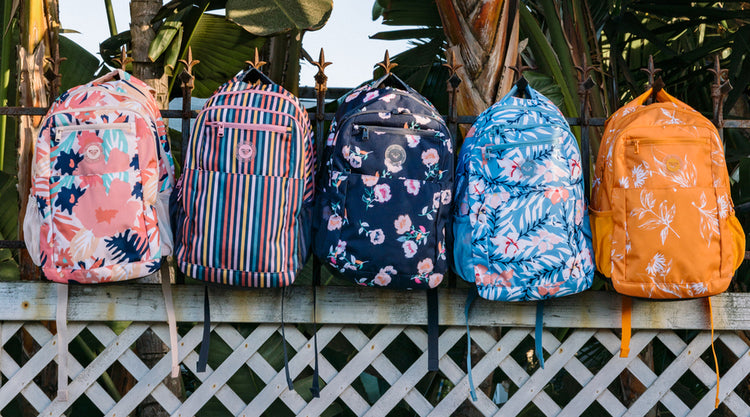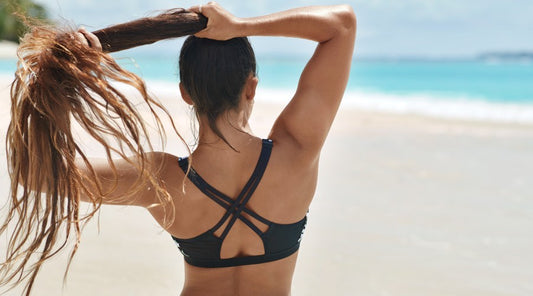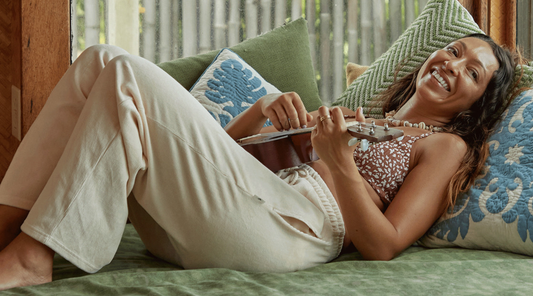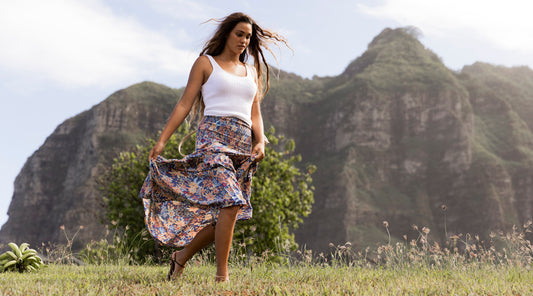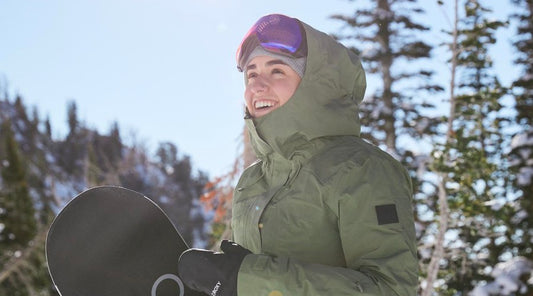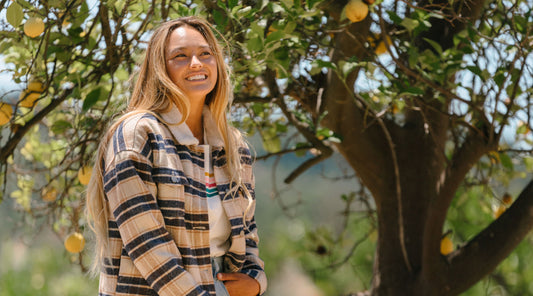The back-to-school season is upon us, which means it's time to start thinking about the essential supplies you’ll need for a successful school year. While textbooks, notebooks, and pencils often take center stage, there's one item that plays an important role in your daily life as a student: Your backpack.
Read on to discover what to consider when selecting the ideal back-to-school backpack for girls. From size to comfort to durability, we’ll explore every aspect that makes a bookbag the ideal choice for your individual needs.
Bookbag Factors To Consider
The perfect back-to-school backpack should be comfortable, durable, and stylish accessory. Let’s dive a little deeper into each factor of a quality bag:
- Size and Capacity – The right school bag should have enough storage space to accommodate textbooks, notebooks, and other essentials. It’s also important to consider the appropriate size to ensure a comfortable fit for your age.
- Comfort and Support – Look for backpacks with padded shoulder straps, adjustable features, and a supportive back panel to distribute weight evenly and provide ergonomic support throughout the day.
- Durability and Materials – Look for girl’s school backpacks with high-quality materials and construction that can support you through daily use. Opt for backpacks made from materials like nylon or polyester that contain reinforced stitching and sturdy zippers.
- Design and Features – While functionality is key, you also want a bookbag that reflects your personal style. Choose between bold prints and vibrant colors, and additional features like multiple compartments, water bottle holders, and built-in organizers that keep your belongings easily accessible.
Size and Capacity
Keep the following tips in mind as you determine the appropriate capacity for your backpack:
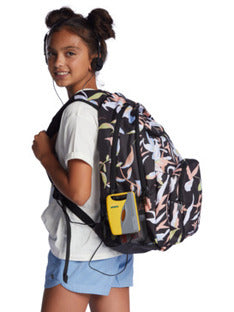
Evaluate your school schedule: Take into account the number of classes you have in a day and the types of materials you'll need to carry, such as textbooks, notebooks, and folders.
Think about electronic devices: If you regularly carry a laptop, phone or tablet to school, ensure that you have a designated padded compartment to protect them.
Account for extracurricular activities: If you participate in activities that require additional equipment, like gear for sports or small musical instruments, choose a backpack with enough space to accommodate those items.
Balance weight and comfort: While it's tempting to choose a larger backpack for extra storage, be mindful of the weight of your books and other school supplies. Find a balance between capacity and comfort to avoid carrying too much weight.
School Backpack Size Chart
| Age | Backpack Size | School Grade |
|---|---|---|
| 11-13 | Small to Medium | Middle School (6th-8th grade) |
| 14-15 | Medium | Freshman and Sophomore (9th-10th grade) |
| 16-18 | Medium to Large | Junior and Senior (11th-12th grade) |
- A small school backpack generally ranges from 15-17 inches in height, 10-12 inches in width, and 5-7 inches in depth (11-16L capacity).
- A medium school backpack generally ranges from 17-19 inches in height, 12-14 inches in width, and 6-8 inches in depth (17-27L capacity).
- A large school backpack generally ranges from 19-21 inches in height, 14-16 inches in width, and 8-10 inches in depth (28L+ capacity).
What size backpack for high school teens?
Opt for a medium-sized or large teen backpack (17-28L+) in high school to prevent overflowing. You’ll often have a mix of textbooks, notebooks, binders, and electronic devices that require a lot of space. If you’re doing extracurricular activities, the space in a larger bookbag is helpful for carrying equipment.
What size backpack for middle school?
A small to medium-sized backpack (11-27L) is ideal for kids in middle school. It’ll provide enough space to comfortably accommodate textbooks, notebooks, folders, and other essential supplies.
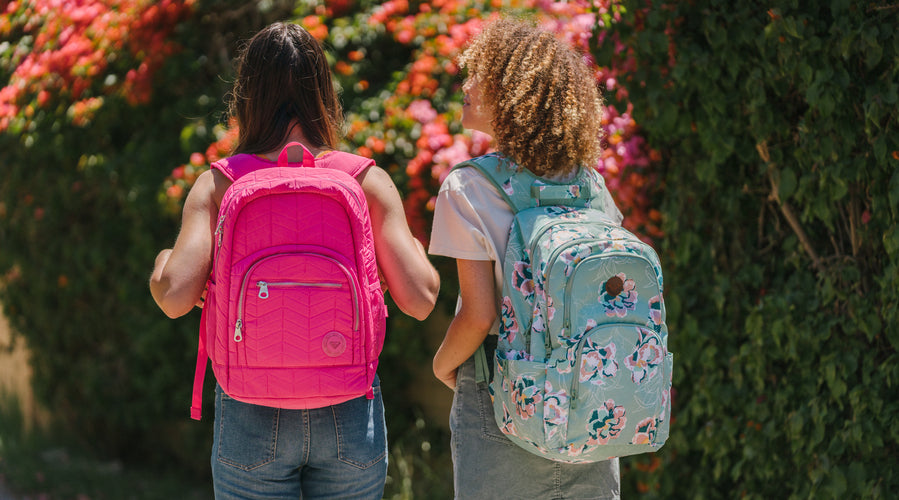
Comfort and Support
School bags for girls come with a variety of features meant to optimize comfort, from shoulder straps and back panels to sternum straps and hip belts.
- Shoulder straps: Adjustable straps allow for a customized fit and proper weight distribution.
- Back panels: Promote airflow, help prevent excessive heat buildup, and protect your back from any bulky items in your backpack.
- Sternum strap and hip belt: Help improve balance by evenly shifting weight away from the shoulders and onto your hips.
How To Properly Fit Your Backpack To Your Body
- Adjust your school bag’s shoulder straps to ensure they rest comfortably on your upper back.
- Position the bottom of the backpack above your hips to avoid pressure on your lower back.
- Tighten the sternum strap and hip belt (if included) to distribute weight evenly.
- Test the fit by moving around to see if it stays secured to your back without your bag bouncing or shifting.
Durability and Materials
Durability is one of the most important characteristics when choosing a back-to-school backpack. Learn about different materials, denier ratings and other factors to look for.
The Pros and Cons of Backpack Materials
Polyester
- Pros: Lightweight, water-resistant, and easy to clean.
- Cons: May not be as durable as other materials and colors can fade over time.

Canvas
- Pros: Known for its durability and sturdiness, making it suitable for heavy use.
- Cons: May require more effort to clean.
Nylon
- Pros: Lightweight, water-resistant, and durable.
- Cons: May not be the most breathable option in warmer weather.
Ripstop
- Pros: Known for its durability, designed to resist tears and punctures.
- Cons: May be less flexible for extended periods of wear.
Mesh
- Pros: Offers breathability and ventilation that help regulate body temperature.
- Cons: May not provide as much protection against the elements.
What’s a Denier and Why Is It Important?
“Denier” is a unit of measurement used to determine the thickness and strength of a fabric. The higher the denier number, the thicker and more durable the fabric is.
For school backpacks, denier ratings typically range from 300D to 1200D or higher.
It’s important to note that the denier rating doesn’t directly translate the same way across all types of fabrics. Different materials have varying densities and structures, which also affect their overall strength and durability.
How To Assess a Backpack’s Durability
- Examine the stitching: Opt for backpacks with reinforced stitching, especially in areas prone to more use, like the straps, handles, and zipper seams.
- Consider the quality of zippers: Look for backpacks with sturdy, reliable zippers that open and close easily and have durable pull tabs.
- Test the fabric thickness: Feel the fabric to ensure that it’s durable and capable of withstanding regular use.
- Look for additional reinforcements: Check for reinforced bottom panels and extra padding in high-impact areas that provide protection.
Design and Features
The design and features of your back-to-school backpack make a big difference in both style and functionality. Here are some key elements to consider:

Padded Laptop Sleeve
A padded laptop sleeve provides a cushioned compartment to securely hold and protect your laptop or tablet. Look for school backpacks with this feature to ensure your electronic devices stay safe on-the-go.
Sunglass Pocket
A dedicated pocket for sunglasses protects them from scratches or damage. This feature ensures easy access to your sunglasses without having to rummage through the main compartment.
School Supplies Pockets
Multiple compartments keep your supplies organized and easily accessible. Look for backpacks with different pocket sizes for storing pens, pencils, erasers, calculators, and other essentials.
Water Bottle Pockets
A dedicated water bottle pocket helps you stay hydrated during and between classes. These elasticized or mesh pockets securely hold water bottles, prevent leaks, and keep your water bottle within reach.
Reinforced Rubber Bottom
Reinforced rubber bottoms provide you with extra durability and protection against wear and tear. This feature helps guard the backpack against damage from rough surfaces, spills, or accidental drops.
What To Bring To School Instead of a Backpack

Tote Bag
If you aren’t feeling a back-to-school backpack this semester, a tote bag is a convenient alternative. Keep in mind, however, that they do keep weight on one shoulder, so if you’re carrying a bigger load, a backpack still may be the best choice. Read on to learn about the benefits of totes.
- Variety and Style: Tote bags come in a wide range of colors, patterns, and materials that make it easy to find a tote bag that matches your personal style.
- Versatility: Take your tote bag to the mall, out to lunch, or to your after-school activities – their versatility means they’re great outside of the classroom, too.
- Lightweight and Compact: Tote bags are generally lightweight and foldable, making them easy to carry around and store when you’re not using them.
- Easy Access: Tote bags provide quick and convenient access to your belongings due to their open-top design.
- Spacious and Roomy: Tote bags offer plenty of space to store books, notebooks, laptops, and other school essentials.
- Organization: Some tote bags feature internal pockets or compartments to help keep your items organized and easily accessible.
Size, durability, and design are key features to keep in mind, whether you’re opting for a classic backpack or a cute tote, but don’t forget to prioritize a proper fit to ensure your bag stays comfortable from the first day of school to the last!


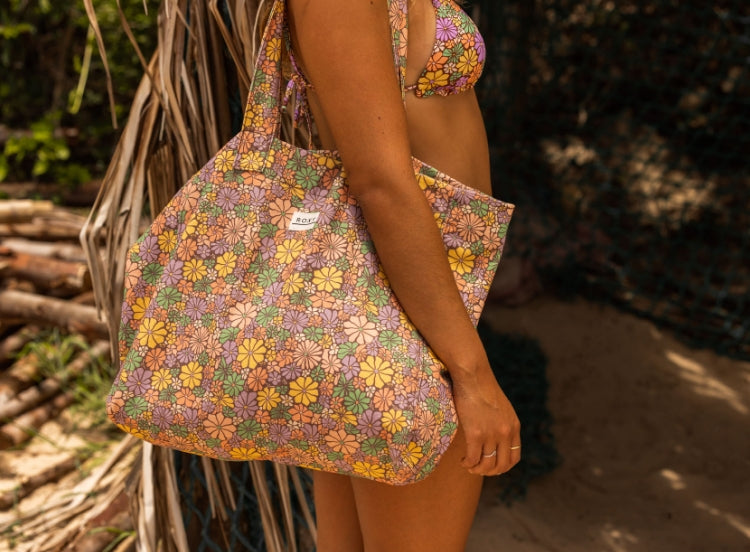
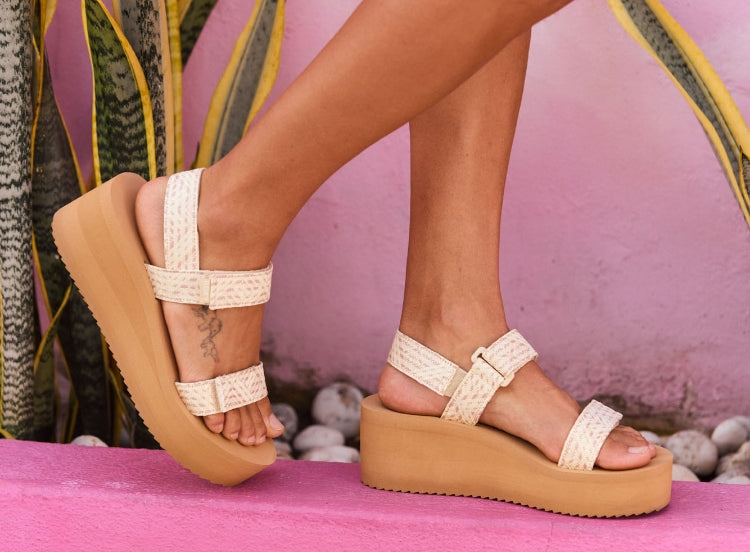




 {{ Geo.current_site.flag_label }}
{{ Geo.current_site.flag_label }}
 {{ Geo.target_site.flag_label }}
{{ Geo.target_site.flag_label }}
